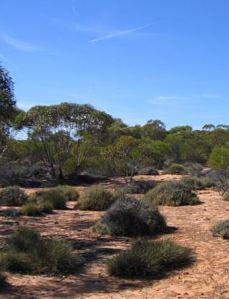 Last month I covered a topic that is not only becoming the latest fashion-trend in conservation, it is also where much of the research funding is going. Whether or not this is the best use of limited research resources is largely irrelevant – as I always preach to fledgling grant writers: “Write about what the funding agency wants to fund, not what you want to do”. Cynical, I know, but it is oh-so-true.
Last month I covered a topic that is not only becoming the latest fashion-trend in conservation, it is also where much of the research funding is going. Whether or not this is the best use of limited research resources is largely irrelevant – as I always preach to fledgling grant writers: “Write about what the funding agency wants to fund, not what you want to do”. Cynical, I know, but it is oh-so-true.
The topic in question is how we as conservation biologists ensure that the new carbon economy drives positive change for biodiversity, rather than the converse. Hell knows we really can’t afford for land-use change to get any worse for biodiversity; worldwide we are on trajectory for a mass extinction within our lifetime, so anything that potentially makes it worse should be squashed completely.
But it seems that land- and seascape changes that might arise from trading carbon (including carbon pricing) are on a knife-edge as far as biodiversity is concerned. I described this dilemma in my previous post, and I am happy to say that the manuscript arising is almost complete. Briefly, if we as a society decide to try to reduce greenhouse gas emissions and capture as much carbon as possible by altering land-use practices, then it is likely that our forests will become vast monocultures incapable of sustaining much biodiversity at all. In other words, there’s a balance to be struck between what is good for carbon sequestration and what is good for biodiversity. While not always mutually exclusive, neither are they mutually attainable goals.
Enter our latest grant1 from the Australian Research Council (ARC) which was awarded only a few weeks ago. What we propose to do in brief is to examine experimentally the cost-benefit trade-off between biodiversity and carbon using a replicated planting regime in semi-arid Australia. The approach is quite simple, but it will take many years to pay off. What we are asking is: how many different species and in what densities are required to restore a native woodland from an over-grazed paddock that provide the biggest long-term biodiversity and carbon benefits simultaneously for the lowest costs?
Sound familiar? Well, if you are a long-time subscriber to this blog, you’ll have heard of this before. A few years ago, Margie Mayfield at UQ, some colleagues and I were awarded an ARC grant to do just that, only that was for a tropical forest in the Atherton Tablelands in far north Queensland. Well, Margie and I have just been awarded a grant to repeat the project, only this time for the semi-arid Mallee scrubland of South Australia.
Our basic approach in both areas is to apply a few biodiversity (native monoculture, medium diversity, high diversity) and planting density treatments (low and high spacing) to plots within blocks repeated across a landscape. We want to test whether the time-consuming and expensive high-density, high-diversity plots end up sequestering more carbon and housing more species once the forest has matured then the other treatments. However, if we can get away with (i.e., end up with the similar carbon sequestration and biodiversity) lower tree densities when planting, and fewer species planted, then our costs will go down.
The approach will be superficially similar between sites, although some important differences remain. First, we have far fewer tree and shrub species to play with down south. Our ‘high-diversity’ treatments will only have about 8 species or so. Second, we’re dealing with a very dry area – about 300 mm/year rainfall total (compared to the many metres of rain dumped each year on the Thiaki site in Queensland). We’re also dealing with a fairly level experimental planting area at Monarto Zoo in South Australia, whereas the Thiaki site is topographically complex (i.e., bloody steep).
We’re getting started pretty soon on the South Australian experiment, so wish us luck, some good weather (i.e., rain) during and after planting, and no major disasters. Also, if you feel like investing in the longer-term monitoring (the grant only lasts for 3 years – enough to get the plants in the ground), then by all means, please talk to me!
Many thanks to the ARC, Zoos South Australia (especially Briony Horner), the South Australia Department of Environment, Water and Natural Resources (DEWNR) and the Australian Flora Foundation for co-investment: your contributions made all this possible!
CJA Bradshaw
-
1Our Dean describes grants as ‘potential science’, whereas papers are ‘realised science’. The Excellence in Research for Australia (ERA) initiative is certainly changing how our universities are viewing scientific ‘success‘.

